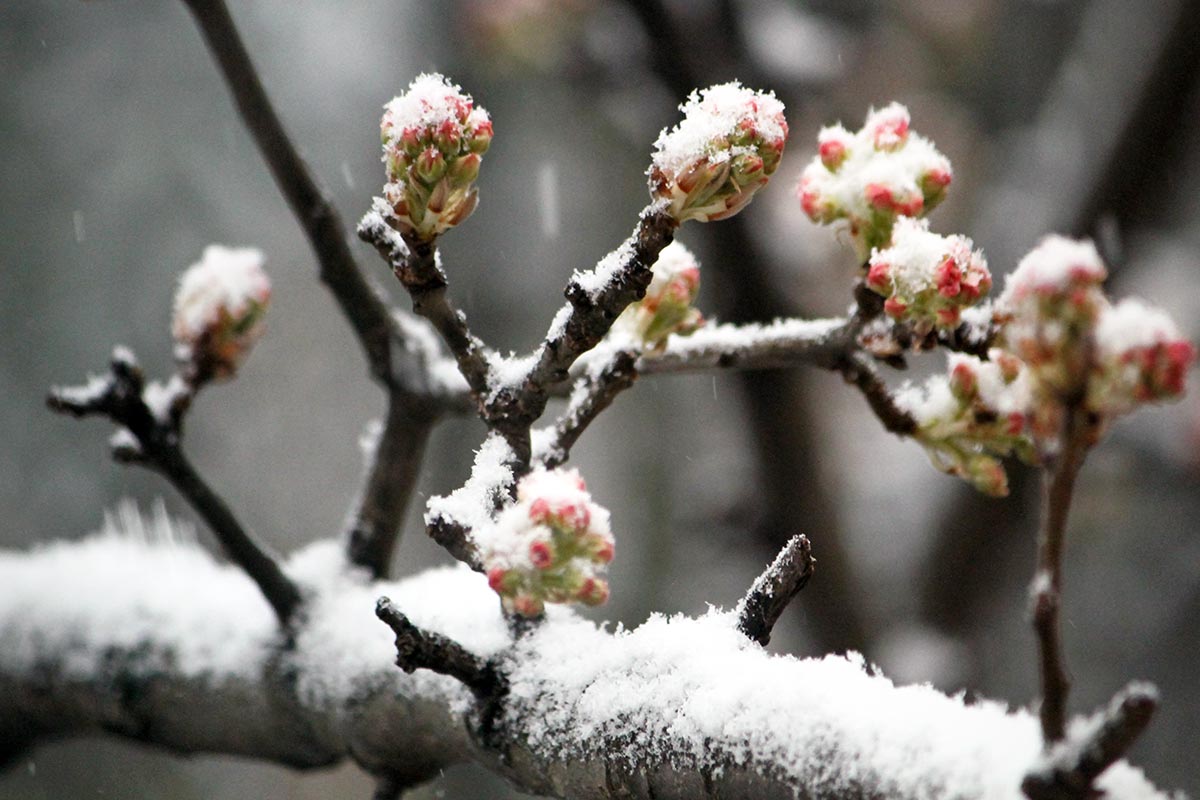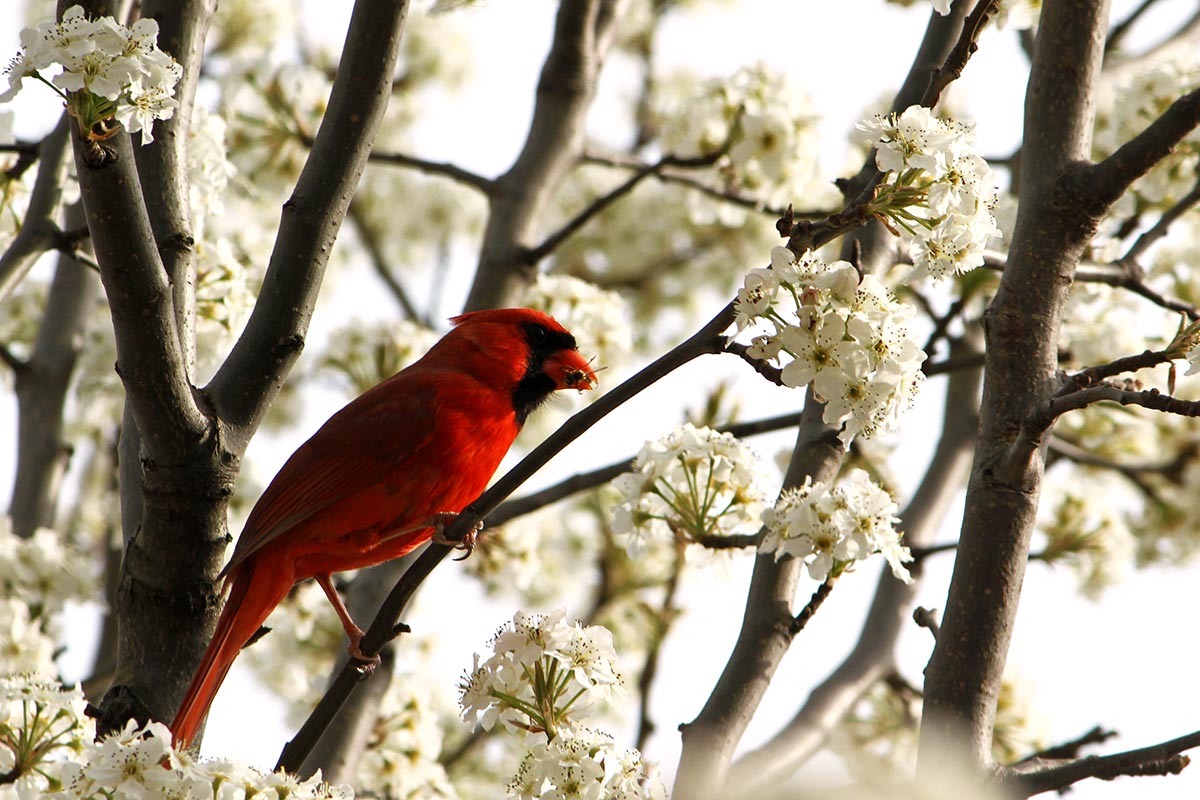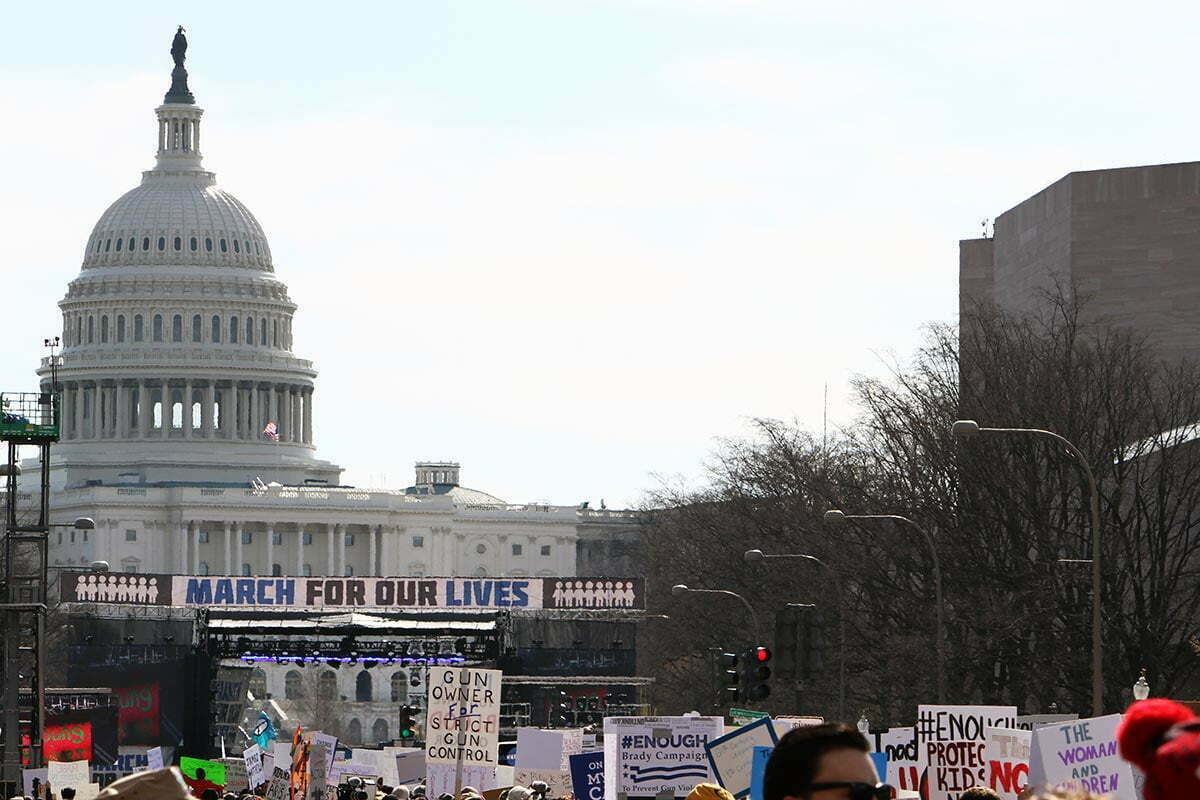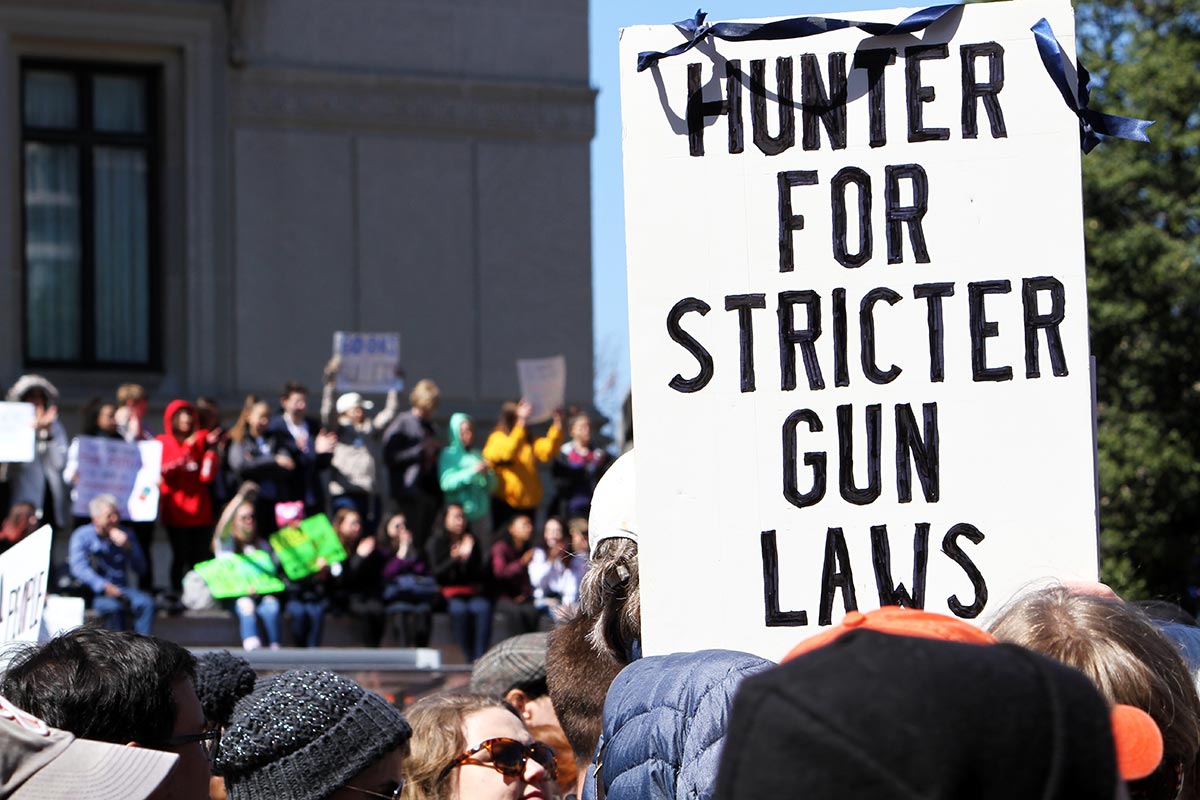Snow on Tree Buds
 Taken on March 21st, 2018.
Taken on March 21st, 2018.
 Taken on March 21st, 2018.
Taken on March 21st, 2018.
 Taken on April 1st, 2018.
Taken on April 1st, 2018.
 Taken on March 24th, 2018.
Taken on March 24th, 2018.
 Taken on March 24th, 2018.
Taken on March 24th, 2018.
Here are a few of my favorite articles from 2017. Some were deep investigations into topics I wasn’t familiar with or had valuable advice. Others were just full of great quotes or described an absurd event. Even though my volume of blog posts has plummeted, I do hope to keep this annual tradition alive.
Feel free to check out the past selections at these links: 2016, 2015, 2013, 2012, 2011, 2010, 2009 and 2008. Thanks for reading and happy 2018!
7) The Washington Post: What’s a Wendy’s doing there? The story of Washington’s weirdest traffic circle.
A great history project full of good quotes about Dave Thomas Circle, the bizarre traffic situation around a Wendy’s where First Street NW, New York Avenue and Florida Avenue collide.
“The chaotic dance of cars around Dave Thomas circle drives one of the devil’s great engines of human misery,” computer engineer Brian Holcomb tweeted a few years ago.
Washington is one of the most exactingly planned cities in the country — from its elegant avenues and roundabouts, to its intricate height limits and sweeping Mall — and yet here is the chipped tooth that gives the town some character, and hints at a grittier, improvised past.
“I can explain to you in great detail why the White House is where it is, why Dupont Circle is where it is,” says Berg, the L’Enfant biographer. “The romance of [Dave Thomas Circle] is that it’s inexplicable.”
6) The New Yorker: Estonia: The Digital Republic
A fascinating exploration of the tiny country’s head first dive into a digital future.
Today, citizens can vote from their laptops and challenge parking tickets from home. They do so through the “once only” policy, which dictates that no single piece of information should be entered twice. Instead of having to “prepare” a loan application, applicants have their data—income, debt, savings—pulled from elsewhere in the system. There’s nothing to fill out in doctors’ waiting rooms, because physicians can access their patients’ medical histories. Estonia’s system is keyed to a chip-I.D. card that reduces typically onerous, integrative processes—such as doing taxes—to quick work. “If a couple in love would like to marry, they still have to visit the government location and express their will,” Andrus Kaarelson, a director at the Estonian Information Systems Authority, says. But, apart from transfers of physical property, such as buying a house, all bureaucratic processes can be done online.
“I’ll show you a digital health record,” she said, to explain. “A doctor from here”—a file from one clinic—“can see the research that this doctor”—she pointed to another—“does.” She’d locked a third record, from a female-medicine practice, so that no other doctor would be able to see it. A tenet of the Estonian system is that an individual owns all information recorded about him or her. Every time a doctor (or a border guard, a police officer, a banker, or a minister) glances at any of Piperal’s secure data online, that look is recorded and reported. Peeping at another person’s secure data for no reason is a criminal offense. “In Estonia, we don’t have Big Brother; we have Little Brother,” a local told me. “You can tell him what to do and maybe also beat him up.”
5) The Vanguard Blog: Straight from Vanguard retirees: 6 retirement-planning tips
Comment sections are notorious internet cesspools and anecdotes aren’t data, but I found some of the tips from Vanguard’s community refreshingly direct. Especially when most financial advice (beyond the famous index card and a few basics) slackens to a “do what’s best for your situation” tip.
In this post, I provide an overview of what you had to say about what you “coulda, shoulda, woulda” done differently to prepare for retirement. […]
Getting an insider’s perspective is helpful to me as a financial advisor because everyone’s picture of retirement “success” is different. But seeing how thoughtful and resilient real-life investors are—moving forward after making missteps, making the best of any circumstance, and reflecting on their own journeys for the benefit of others—is invaluable to me as a future retiree.
4) Los Angeles Times: 2 men charged in major beehive theft targeting Central Valley almond orchards
Burgled bees!
For more than a year, beekeepers throughout the Central Valley had been reporting hive thefts to local authorities. The thefts triggered concerns throughout the apiary industry, and an advisory went out to beekeepers, bee brokers and almond growers urging them to stay vigilant.
The beehives were stolen from 10 beekeepers over two years, prosecutors said. According to sheriff’s officials, most of the stolen hives belonged to out-of-state beekeepers, who rented out their colonies to California almond tree growers looking to pollinate their crops.
Sheriff’s investigators said Tveretinov stole the hives at night, when bees are dormant, and moved them on flatbed trailers around California and to other states. Tveretinov likely rented the hives out for cash, authorities said.
3) The New Yorker: Doomsday Prep for the Super-Rich
I’m all for being prepared for emergencies, but this article is a disturbing look into the market of prepping built on growing mindset of ultra-wealthy individuals who believe the answer to societal collapse is to escape and isolate rather than assist and rebuild.
Survivalism, the practice of preparing for a crackup of civilization, tends to evoke a certain picture: the woodsman in the tinfoil hat, the hysteric with the hoard of beans, the religious doomsayer. But in recent years survivalism has expanded to more affluent quarters, taking root in Silicon Valley and New York City, among technology executives, hedge-fund managers, and others in their economic cohort.
Before my trip, I had wondered if I was going to be spending more time in luxury bunkers. But Peter Campbell, the managing director of Triple Star Management, a New Zealand construction firm, told me that, by and large, once his American clients arrive, they decide that underground shelters are gratuitous. “It’s not like you need to build a bunker under your front lawn, because you’re several thousand miles away from the White House,” he said. Americans have other requests. “Definitely, helipads are a big one,” he said. “You can fly a private jet into Queenstown or a private jet into Wanaka, and then you can grab a helicopter and it can take you and land you at your property.” American clients have also sought strategic advice. “They’re asking, ‘Where in New Zealand is not going to be long-term affected by rising sea levels?’ ”
2) The New York Times: The Lure of a Better Life, Amid Cold and Darkness
A chilling introduction to Norilsk, a former outpost of Stalin’s Gulag and major industrial city in northern Russia, and the hardened people who live there.
Blessed with a cornucopia of precious metals buried beneath a desert of snow, but so bereft of sunlight that nights in winter never end, Norilsk, 200 miles north of the Arctic Circle, is a place of brutal extremes. It is Russia’s coldest and most polluted industrial city, and its richest — at least when measured by the value of its vast deposits of palladium, a rare mineral used in cellphones that sells for more than $1,000 an ounce.
Despite the horrendously harsh climate, choking pollution and absence of sunlight from late November until January, many residents are fiercely proud of Norilsk — and their own ability to survive in an environment that even the hardiest of Russians living elsewhere would find intolerable.
Last winter, temperatures plunged to minus 62 Celsius (minus 80 Fahrenheit), and early winter this year has also been unforgiving, with temperatures in November already falling to around minus 20 Celsius, about 4 below Fahrenheit.
1) National Geographic: This Tiny Country Feeds the World
An eye-opening look at how the Netherlands is an agricultural force and a window into the possible future of farming. The feature is full of great photos, interviews and explanations of complex issues.
From his perch 10 feet above the ground, he’s monitoring two drones—a driverless tractor roaming the fields and a quadcopter in the air—that provide detailed readings on soil chemistry, water content, nutrients, and growth, measuring the progress of every plant down to the individual potato. Van den Borne’s production numbers testify to the power of this “precision farming,” as it’s known. The global average yield of potatoes per acre is about nine tons. Van den Borne’s fields reliably produce more than 20.
That copious output is made all the more remarkable by the other side of the balance sheet: inputs. Almost two decades ago, the Dutch made a national commitment to sustainable agriculture under the rallying cry “Twice as much food using half as many resources.” Since 2000, van den Borne and many of his fellow farmers have reduced dependence on water for key crops by as much as 90 percent. They’ve almost completely eliminated the use of chemical pesticides on plants in greenhouses, and since 2009 Dutch poultry and livestock producers have cut their use of antibiotics by as much as 60 percent.